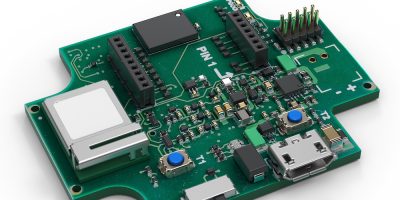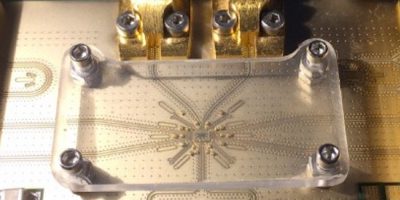R&D effort can be simplified to assist rapid prototyping and reduce time to market for the segmented IoT market, using the Application Board 3.0, says Bosch Sensortec. It offers Bluetooth connectivity and a small form factor for IoT applications and supports the full range of Bosch Sensortec sensors
The Application Board 3.0 simplifies the evaluation and prototyping of sensors for a wide range of applications, particularly in Industry 4.0, IoT, smart home systems, and wrist- and head-mounted wearables, explained Bosch-Sensortec.
Any Bosch Sensortec sensor mounted on a ‘shuttle board’ is simply plugged into the socket on the Application Board. All shuttle boards have an identical footprint, and Bosch Sensortec’s software automatically detects which sensor is plugged in at any given moment to launch the appropriate software. This enables the straightforward evaluation of a wide range of sensors and solutions, said Bosch Sensortec. Prototypes can be built to quickly test different use case configurations, added the company.
The board measures just 47.0 x 37.0 x 7.0mm3, which is practical for evaluating sensors used in portable applications, observed Bosch Sensortec. The board can be powered using a 3.7V Li-ion battery or a standard 5V USB power supply.
“The Application Board 3.0 makes it quick and easy for developers to build their projects with any of our sensors on a single platform, meaning that they can now focus on creating unique use cases and differentiating their products,” says Dr. Stefan Finkbeiner, CEO at Bosch Sensortec. “Our customers also benefit from efficient support through regional field application engineers and Bosch offices,” he continued.
The integrated development environment (IDE) software provided with the board includes a simplified graphical user interface (GUI) to evaluate and tune sensor parameters, as well as to visualise and record sensor data. The software also saves time in troubleshooting sensor-related issues, claims Bosch Sensortec.
Application Board 3.0 is designed around the u-blox NINA-B302 Bluetooth Low Energy (BLE) module and is based on the nRF52840 chipset from Nordic Semiconductor, which includes an Arm Cortex-M4F CPU. It is certified and compliant with multiple directives for different international regions: CE, RoHS, China RoHS, FCC, IC, VCCI, SRRC and NCC.
The board is supplied with 256kbyte RAM, 1Mbyte of internal flash and 2Gbyte of external flash memory for data logging. It provides full-speed micro-USB 2.0 connectivity and BLE to connect to a host, such as a PC, for transferring the logged sensor data from the board.
The Application Board 3.0 is available now.







